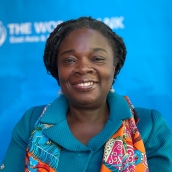There are three clear opportunities for collaboration.
One, ending the pandemic. The region can work together on vaccine production and deployment within a global context of greater supply and cooperation . Some countries, including Indonesia, Thailand, and Vietnam, are already looking at expanding production capacity.
Increased coordination could allow for better matching of supply and demand and targeting to where needs are greatest. And this spirit of cooperation could be extended beyond vaccines to other critical supplies, such as personal protective equipment, masks, and testing kits.
Efforts can also be made to scale up knowledge and information-sharing, with a focus on best practices for containment, testing, and tracing. Such cooperation is far from unprecedented and could build on existing regional mechanisms, such as the Association of Southeast Asian Nations’ comprehensive COVID-19 recovery framework. The broader the efforts to end the pandemic, the quicker the entire region can reopen.
Second, collaboration is also needed in reviving the economy. Poverty has spiked in East Asia and the Pacific since early 2020 as entire sectors and industries, including tourism, remain shuttered. Governments have increased fiscal stimulus and social protection schemes, but these efforts have often fallen short as economies struggle to cope with the most recent waves of infections.
If countries in the region and globally can better coordinate their fiscal and monetary policies, the impact of their efforts will be greater than the sum of the individual parts – and each will be prepared to do more once neighbors are seen to be sharing the burden.
Once it is safe to do so, countries can consider opening travel bubbles, combined with proof of vaccination and testing requirements, to revive the tourism and hospitality industries. And once the recovery is in full swing, those economies facing labor shortages could look to bringing back workers from neighboring countries, while improving health and safety conditions to avoid any further outbreaks among these communities.
Such jobs, however, will depend in part on the revival of infrastructure investments. While public investment has only dropped marginally, private participation in infrastructure projects in East Asia – which was already low compared to other regions (at 2 percent versus an average of 20 percent for developing countries globally excluding China) – plunged 75 percent in 2020 compared to 2019.
Going forward, we will need a strong commitment from both the public and private sectors to expand sustainable infrastructure. This can be driven by a regional push to tap pools of private capital and debt that are seeking opportunities for green infrastructure investments with reasonable and secure returns, and by improving regional connectivity and logistics to reduce supply chain costs and improve efficiencies.
In addition to hard infrastructure, there is tremendous potential in the region for expanding efforts for nature-based solutions. These are actions to protect, sustainably manage, and restore natural and degraded ecosystems – such as forests, mangroves, and wetlands – that can provide climate, human well-being, and biodiversity benefits.
Three, regional integration could be deepened. Early in the pandemic, there was much talk about the disruption of global value chains, as imports were interrupted and some countries faced shortages. World Bank research, by contrast, shows that close integration into global value chains reduced the vulnerability of East Asian economies during the pandemic and that the COVID-19 shock has in fact deepened the region’s trade integration.
The opportunity now is to build on this, through reforms that would open up protected goods and services sectors to domestic and international competition. Countries like Indonesia, with its structural trade and investment reforms, and the Philippines, which has enhanced tax incentives and is considering liberalizing retail and other sectors, are already paving the way.
If countries can move quickly and move together to cooperate on the supply and distribution of vaccines and other critical health supplies, on measures to revive the economy, and on policies to deepen the integration of the region, much of the international trust lost during the pandemic can be restored. Lives will be safer, and livelihoods will be secure. And East Asia and the Pacific can maintain its rightful place as one of the world’s most dynamic, innovative, and interconnected regions.
This op-ed was originally published in South China Morning Post on July 5, 2021.

